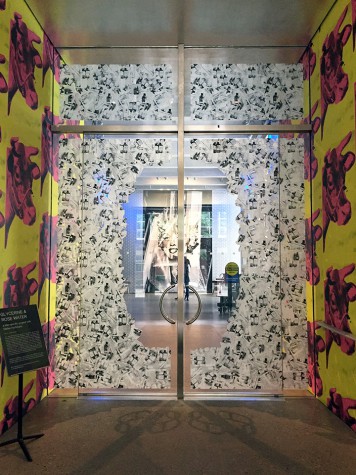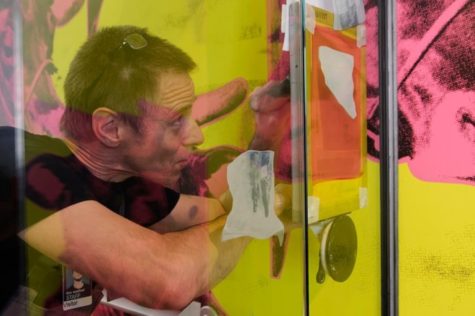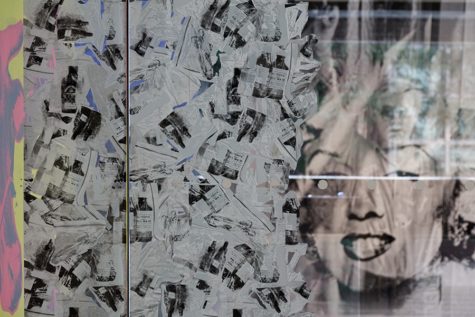PittsburghGLYCERINE and ROSE WATER

Some of the passersby were stopping and staring at the museum windows with the huge Ziploc bags. They probably were reading the words printed below over and over again. Puzzled.
One day when I was outside looking at the windows, a guy came up to me and said, “Did you make this? It’s great.”
With people often looking a little lost, I was cautious. “What exactly do you mean?” “Well, the way you juxtaposed these two ways of representing the bags; it’s cool with the text. I had to go out to the street again to understand it; it’s meant to be seen from here. Here you get it.”
Another day a man came up to me and said, “Now everyone is doing it, but Warhol really was the first.”
That was a strong point he made. Warhol introduced screen printing into the field of contemporary art. We are all following in his footsteps. I could not tell if the passerby meant exactly that, but before I could ask, he was immediately gone, hurrying to catch the baseball game at PNC Park.

All my projects are site specific works in which I use existing info graphics, logos, and ads that are found directly around the project location. I transform this material very much in the ”Pop-art-way” so it stays recognizable and becomes an entry point for the public to engage with the work. But something strange happened in this project. Although there would have been a lot of potential visual material directly available around me, not to speak of Warhol’s own pictorial universe I could have picked from, I ended up using exclusively material that was hidden in boxes and on hard disks in the museum’s archive. I was allowed access to the archive and began to dig through boxes of old deteriorating toiletries stored in Ziploc bags that started leaking. And I got hooked to this strange mixture of smells of degenerated skin products all meant to smooth our outer surface layer. This time I was searching for my source material exactly behind this visible surface layer, in the private, the hidden. Through my projects I try to capture something of the essence of a place.

What is for me the essence of The Andy Warhol Museum? Well, a large part of it obviously derives from the focus on Warhol the artist, the icon of 20th century art, the true predecessor of our “selfie-culture.” And the museum lobby, with its Screen Tests, couch, and Cow Wallpaper, certainly emphasizes this. But the more I thought about Warhol, the more I read, the more I knew, the more mysterious he became. Full of contradictions, very carefully orchestrated by him.
How could I respond to this? I temporarily took up the role of the archaeologist, the archivist. First carefully photographing boxes full of zip-lock bags, then the different bottles and containers inside. Continuing on this path, I started studying the museum’s cataloging manual. I was hooked again! The cataloging records describe minutely each archived item in the most neutral way possible, without attaching a specific value to the one or the other object. These texts are meant to be clear and objective, in a true Cartesian way, detached of emotions and seen from the outside. Using this ”archival gesture” on the large windows created an odd mystery and felt like the perfect counterpart to the decorative act of encroaching and framing I applied on the glass door.
GLYCERINE and ROSE WATER by artist Stefan Hoffmann is on view in the museum’s entrance space through October 4, 2015.